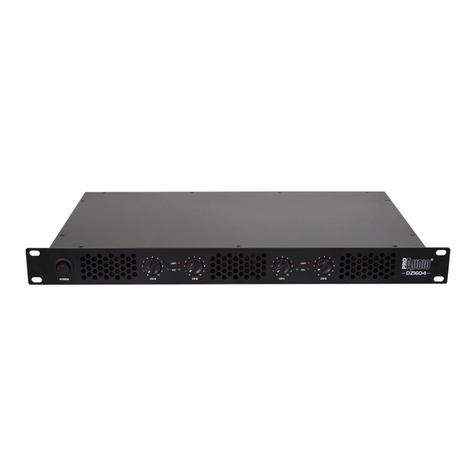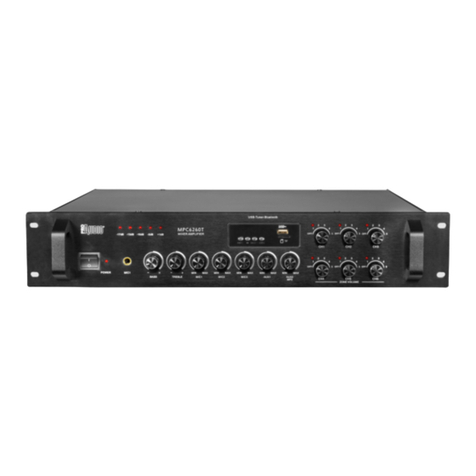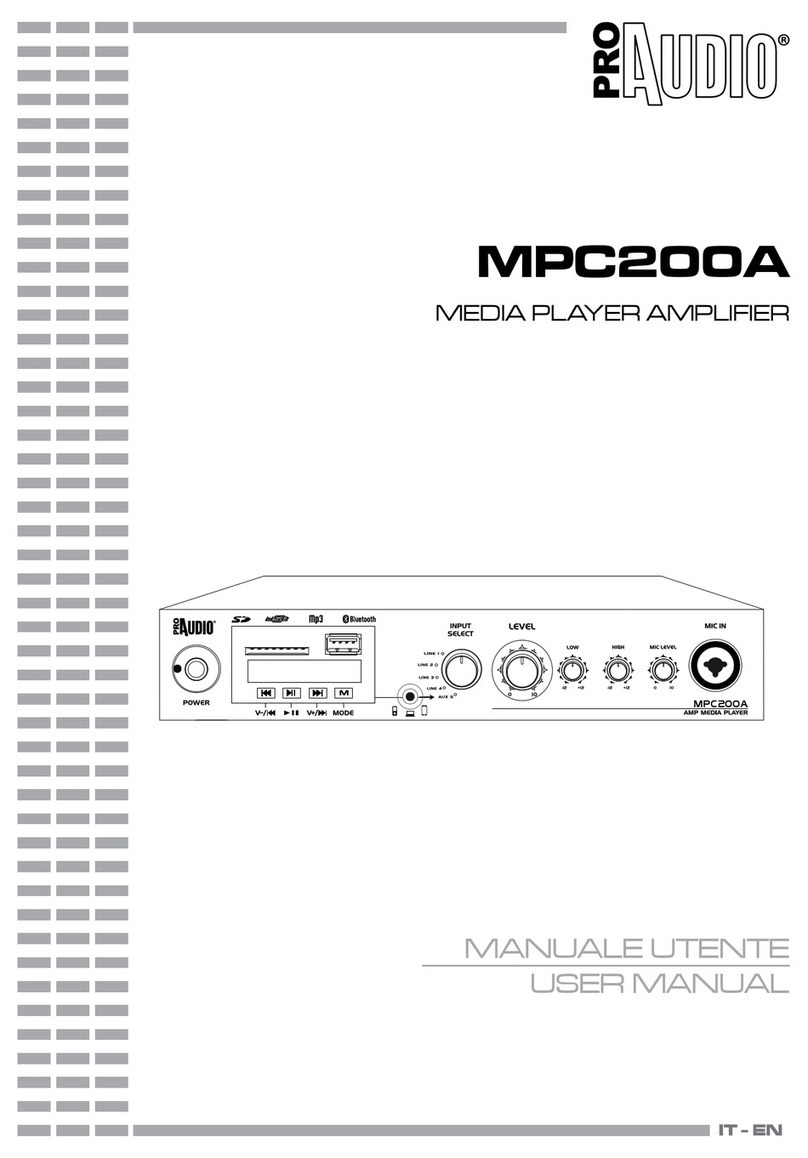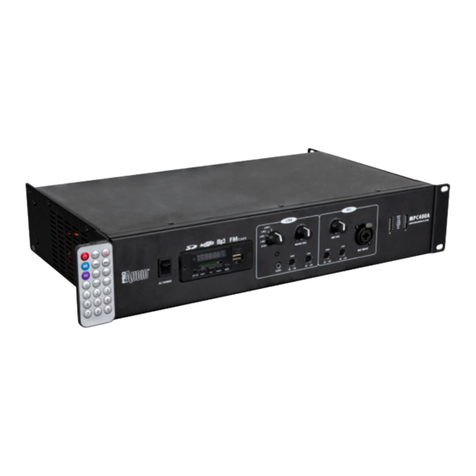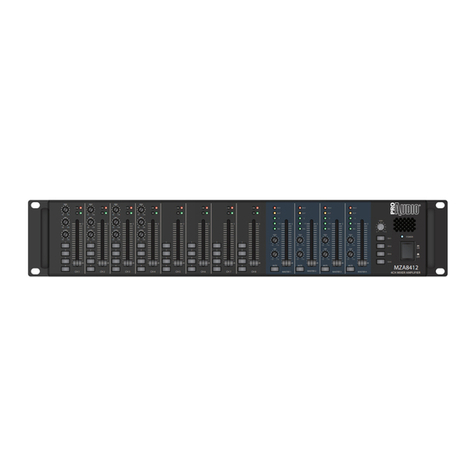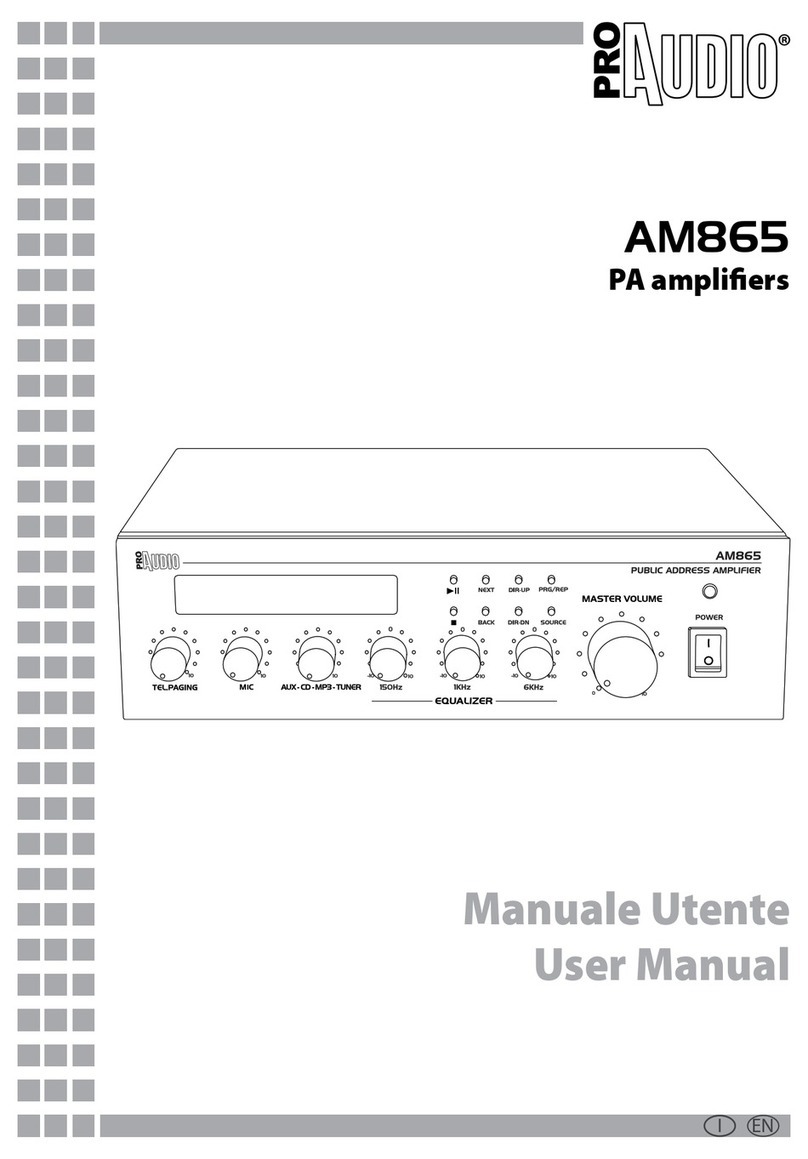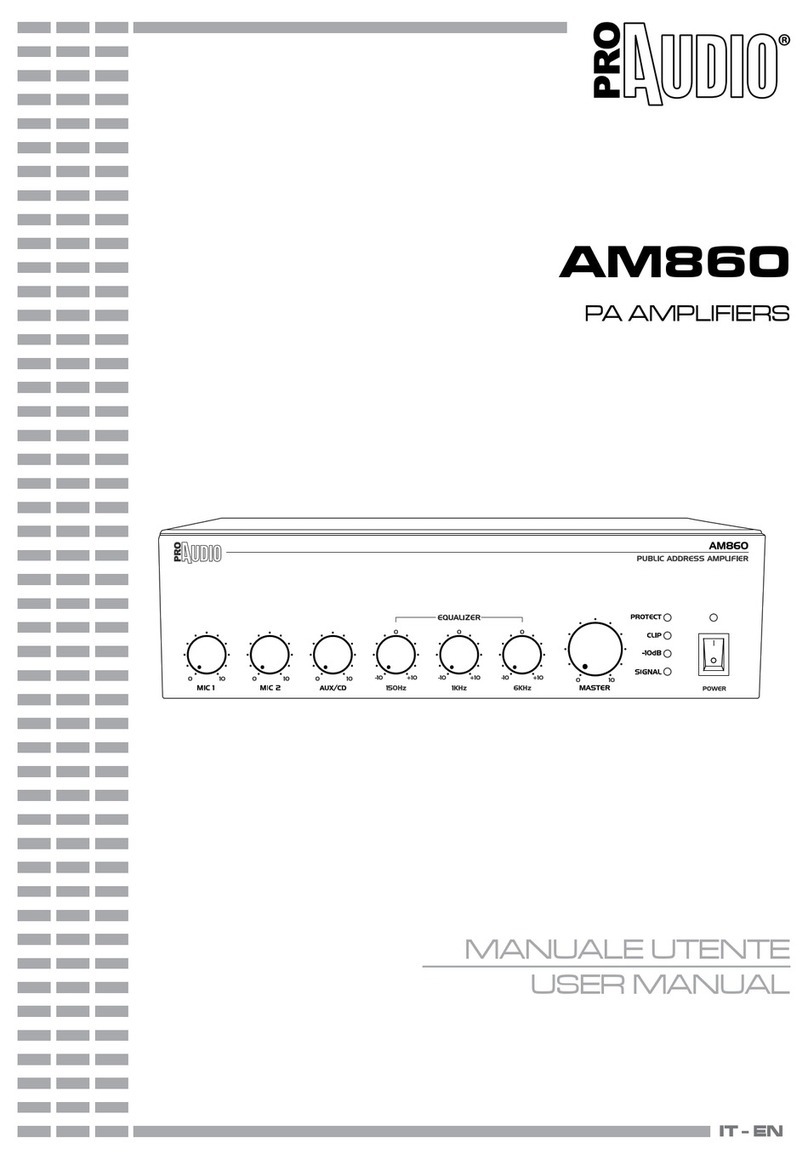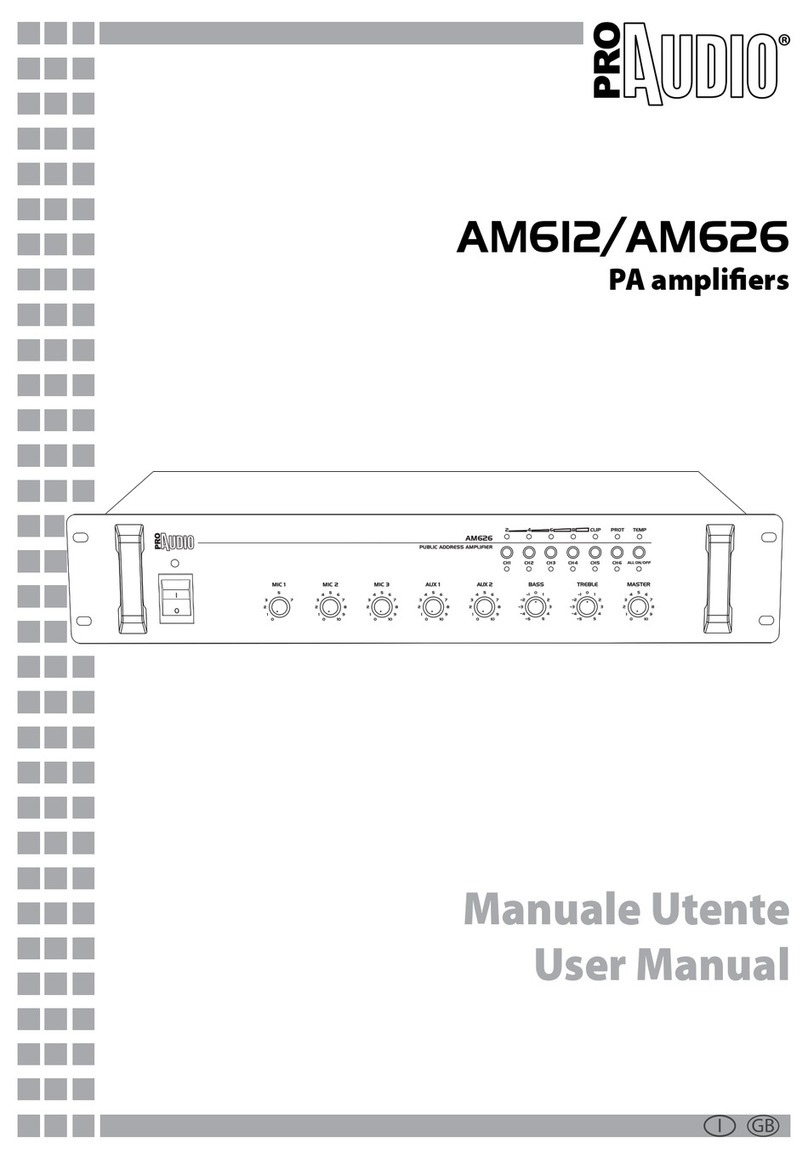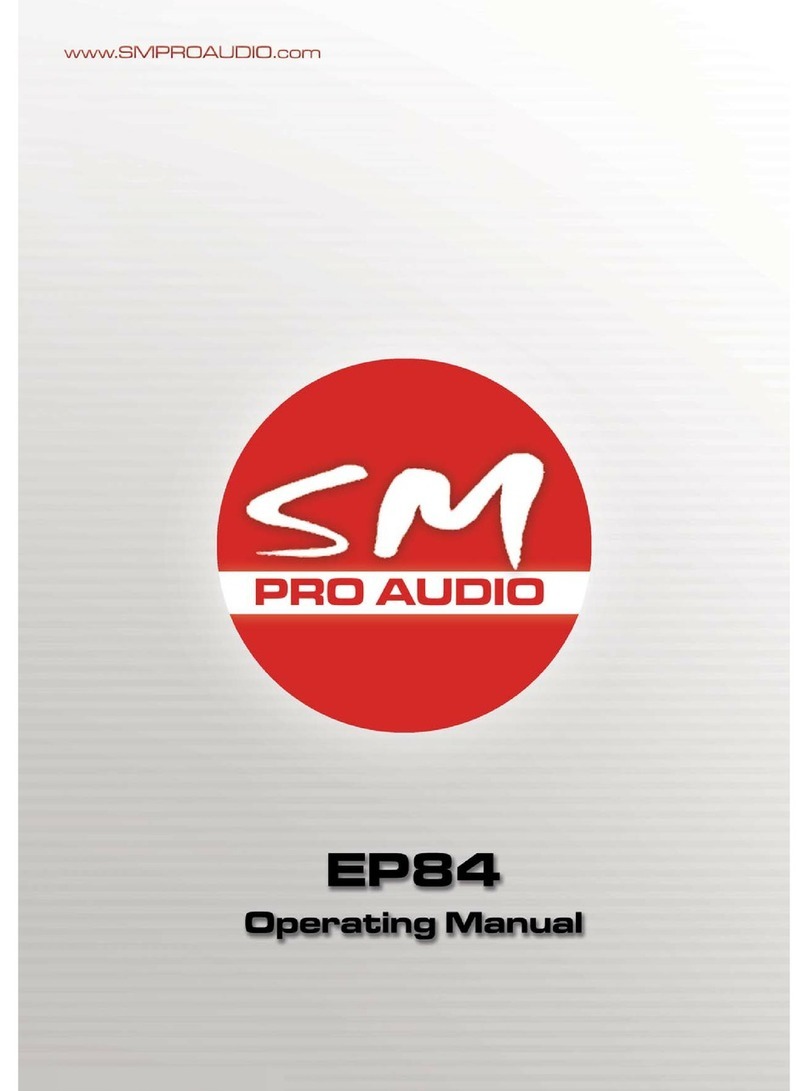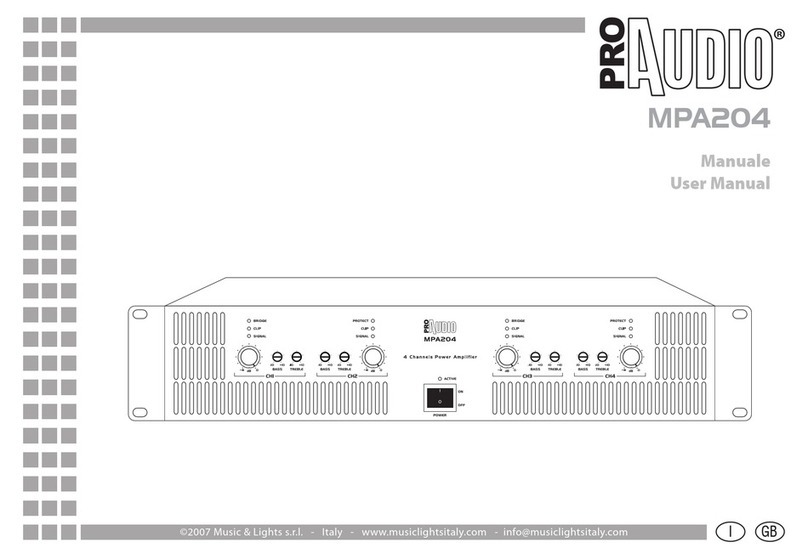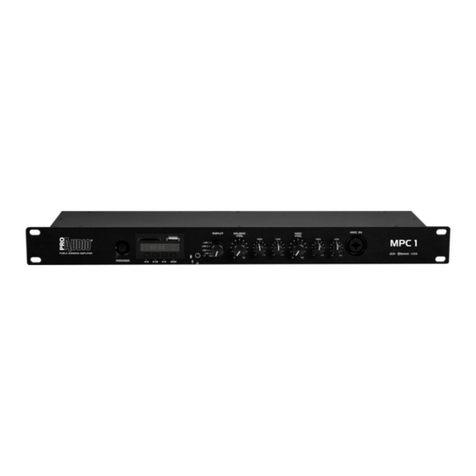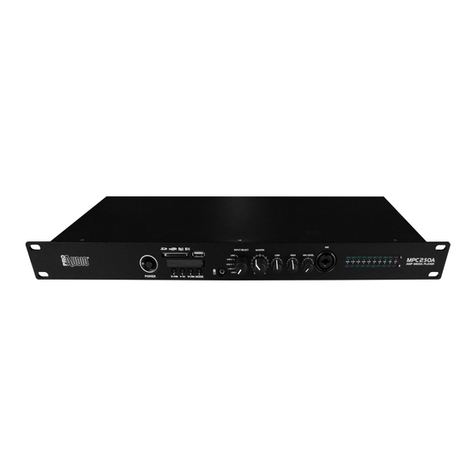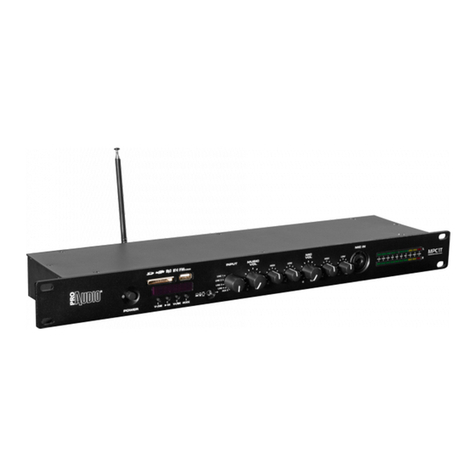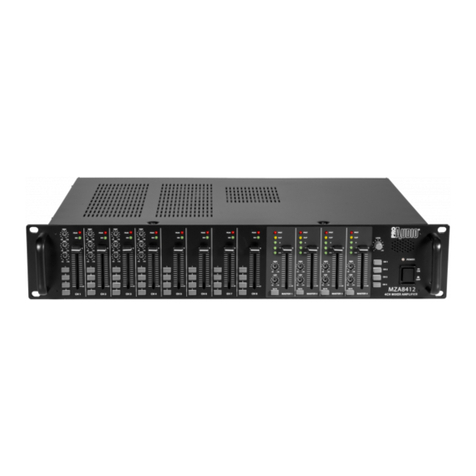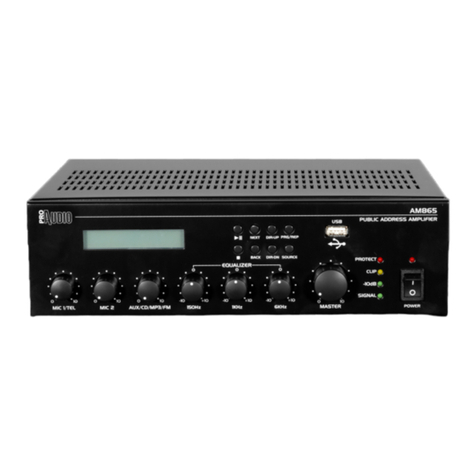
5
ENIT PA120T/PA240T/PA360T
Attenzioni e precauzioni per l’installazione
• Questo prodotto è solo per uso interno.
• Questo prodotto da solo oppure in combina-
zione con amplificatore può essere capace di
produrre livelli sonori che possono causare
perdite d’udito permanenti. Si raccomanda di
evitare l’esposizione ad alti livelli sonori o livelli
non confortevoli per periodi di tempo lunghi.
• Evitare di installare l’unità in prossimità di fonti
di calore o in prossimità di apparati (inclusi am-
plificatori) che producono calore.
• Non utilizzare questo apparecchio vicino all’ac-
qua. Questo prodotto non è impermeabile. Se
liquidi dovessero entrare nell’unità scollegarla
dalla rete di alimentazione. Rivolgersi al centro
di assistenza tecnica autorizzato per le condi-
zioni di sicurezza all’utilizzo.
• Se il dispositivo dovesse trovarsi ad operare
in condizioni differenti da quelle descritte nel
presente manuale, potrebbero verificarsi dei
danni; in tal caso la garanzia verrebbe a deca-
dere. Inoltre, ogni altra operazione potrebbe
provocare cortocircuiti, incendi, scosse elettri-
che, rotture ect.
• Collocare o posizionare il prodotto in modo
che non ci siano ostruzioni alla ventilazione
e dissipazione di calore. Non installare in uno
spazio limitato.
• Assicurarsi che il cavo di alimentazione non sia
rovinato. Controllare prima di ogni utilizzo.
• Il livello di ingresso dell’amplificatore non deve
mai superare la sensibilità segnata.
• Non collegare l’uscita di un amplificatore
all’entrata di un altro. Non collegare in serie
o in parallelo le uscite di un amplificatore con
quelle di un altro.
• Assicurarsi che il segnale sia connesso corretta-
mente all’entrata dell’amplificatore e che esso
sia nella giusta modalità di funzionamento.
• Spegnere l’amplificatore prima di disconnette-
re il cavo di alimentazione dalla rete.
• Prima di iniziare qualsiasi operazione di ma-
nutenzione o pulizia disconnettere l’unità dal-
la rete di alimentazione. Assicurarsi di pulire
l’unità solo con panni asciutti.
• Per la pulizia del prodotto non usare solventi
tipo acetone o alcool per non danneggiare la
finitura esterna e le serigrafie dei pannelli.
• Se il dispositivo cade o subisce gravi urti, scol-
legare immediatamente la spina di alimen-
tazione. Chiamare un tecnico qualificato per
verificare la sicurezza del prodotto.
Warnings and installation precautions
• For inside use only. Not designed for outside
use.
• This product in combination with ampli-
fier, may be capable of producing dangerous
sound levels that could cause permanent
hearing loss. Do not operate for a long period
of time at high volume level or at a level that is
uncomfortable.
• Do not install the fixture near sources of heat
or other apparatus (including amplifiers) that
produce heat.
• Do not use this apparatus near water. This ma-
chine is not water - proof. If liquids enter the
hazer machine case, immediately disconnect
power supply. Contact a service technician to
determine safety for use.
• If this device will be operated in any way differ-
ent to the one described in this manual, it may
suffer damages and the guarantee becomes
void. Furthermore, any other operation may
lead to dangers like short circuit, burns, elec-
tric shock, ect.
• The fixture must be located in a place where a
proper ventilation or thermal dissipation is not
impeded. Do not install the fixture in a con-
fined space.
• Make sure that the power cord is not dam-
aged. Check before each use.
• The input level of the amplifier must never ex-
ceed the marked sensitivity.
• Do not link the output of any amplifier chan-
nel back into another channel’s input. Do not
parallel or series connect an amplifier’s output
with any other amplifier’s output.
• Make sure that the signal is correctly connect-
ed to the amplifier’s input channel and set to
proper input mode.
• Please turn off the power switch before pulling
off the power cord.
• Before starting any maintenance work or
cleaning the unit, cut off power from the main
supply. Clean only wlth dry cloth.
• When cleaning unit, please do not use solvents
such as acetone or alcohol, since they may
damage the of the unit outer finish and the
printings on the panels.
• If device is dropped or struck, disconnect
mains power supply immediately. Have a qual-
ified engineer inspect for safety before operat-
ing.


